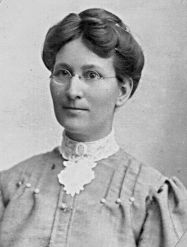| Notes |
- The history of Darke County, Ohio, containing a history of the county; its cities, towns, etc.; general and local statistics; portraits of early settlers and prominent men; by W. H. Beers & Co.
According to this history of Darke County, Ohio:
"In the summer of 1808, John Devor purchased from the United States the half-section of land which had been the site of Ft. Greenville, and in conjunction with this son-in-law, Robert Gray, laid out, partly within and partly without the old fort, what may be called the initial part of the present town of Greenville, to which a dozen or more additions have since been made. Their town plat was executed and acknowledged on the 14th Day of August, 1808, and sent to Miami County, which then included within its limits the whole of what is now Darke County, for record.
On the same day that Devor entered the town half-section, he also entered for his neighbor, John Bonner, of Montgomery County, a halt-section some five miles down the creek below Greenville, and Maj. Murray, of Hamilton, entered the quarter-section on which Fort Jefferson had been built by St. Clair on his ill-starred campaign of 1791. Later in the year, Mr. Studabaker entered the tract on which he settled below Gettysburg. The patents for Bonner's and Studabaker's land were not issued for many years.
After the lapse of more than seventy years, it is a matter of considerable difficulty either to state the order in which emigrants arrived in the new settlement, or even anything that would specify all who did come. It is also, at this day, a matter of considerable uncertainty, if ascertained at all, to find out when what subsequently became, by legislative enactment, Darke County, was organized as a civil township of Miami County. This much is known, that the new settlement was re-enforced by the arrival, in 1808, of Thomas McGrinnis and family from what was yet the new State of Tennessee, and Barnabas Burns, who was married to the mother of the wife of McGrinnis, who was a native of either North or South Carolina, but emigrated to Ohio from Tennessee. Both became land-owners on the west side of Mud Creek, between Greenville and the Prophet's town, as the Indian village was called, to which allusion has been made in these pages.
The same year, or early in 1809, came Enos Terry, afterward an Associate Judge of the Court of Common Pleas, and entered the quarter-section northeast of the town, and laid off upon it another town plat, also called Greenville, that, subsequently to the creation of Darke County, was established as the county seat, but so continued for a brief period. The town site occupied about twenty or twenty-five acres in the northwest corner of the quarter-section. It was then the day of small things ; no man ever built upon or dwelt within the limits of the town. Horatio G. Phillips, of Dayton, purchased two lots, for which he never received a title, but for which he received in lieu a deed in subsequent years of two lots in Devor and Gray's town, to purchase his acquiescence in the measures taken to remove the seat of justice of the county to the other town on the southeast side of the creek.
In 1809, came William and Joseph Wilson, from the Little Miami, to which they had emigrated a few years before, from Washington County, in Pennsylvania; both bought land settled north of Greenville, and, both being natives of the holy sod of "Ould Ireland," the name of "Ireland " was given to, and for many years retained by that part of Greenville Township where they were located. William Wilson was located on a quarter-section but half a mile north of the Devor purchase of the site of the old fort, and one mile north of his quarter was the quarter-section of his brother Joseph. Both men had families of children, some quite young and others grown up to manhood. William Wilson died in 1821, and his wife several years afterward. Joseph Wilson sold out in 1826, and, with his family, sons and daughters then grown up and married, emigrated to the West, somewhere, to "grow up with the country."
Not very long after Devor and Gray had laid off the town of Greenville, probably within a year. Gray disposed of his interest in the newly laid-out town, and the residue of the half-section in which it was situated, to his aunt, Mis. Rachel Armstrong, then a widow with four young children — the eldest not ten years old — who, with her family, removed to and settled in Greenville, about the close of 1809. Devor, the other proprietor, still continued to reside in the county of Montgomery. Mrs. Armstrong, with her nephew, William Devor, a son of the co-proprietor, who came and resided as a member of her family with her; both died of a disease called the "cold plague,'' in January, 1812. Mrs. Armstrong's children were then taken in charge by her relatives in Warren and Hamilton counties; one of them, Samuel Armstrong, born in February, 1806, yet survives, unmarried and keeping bachelor's hall, at Walnut Hills, Hamilton County.
|
.jpg)

.jpg)

 [1]
[1] 


 [1]
[1]  James H. Devor, b. 9 Nov 1733, Chesterfield, Clearfield, Pennsylvania, British Crown Colony
James H. Devor, b. 9 Nov 1733, Chesterfield, Clearfield, Pennsylvania, British Crown Colony d. 1 Sep 1794, Southhampton, Bucks, Pennsylvania, USA
d. 1 Sep 1794, Southhampton, Bucks, Pennsylvania, USA  (Age 60 years) (Father)
(Age 60 years) (Father) 
 (Age 58 years) (Mother)
(Age 58 years) (Mother) 
 d. 1 Sep 1794, Southhampton, Bucks, Pennsylvania, USA
d. 1 Sep 1794, Southhampton, Bucks, Pennsylvania, USA  (Age 60 years)
(Age 60 years)  (Age 58 years)
(Age 58 years) 
 d. Aug 1858, Greenville, Darke, Ohio, USA
d. Aug 1858, Greenville, Darke, Ohio, USA  (Age 100 years)
(Age 100 years)
 ▻ Rhoda D. Dean m. 21 Aug 1828
▻ Rhoda D. Dean m. 21 Aug 1828 d. 25 Sep 1854, Greenville, Darke, Ohio, USA
d. 25 Sep 1854, Greenville, Darke, Ohio, USA  (Age 71 years)▻ David Irwin m. 10 Jan 1817
(Age 71 years)▻ David Irwin m. 10 Jan 1817 d. 28 Jul 1821 (Age 34 years)▻ Abraham Scribner m. 23 Dec 1813
d. 28 Jul 1821 (Age 34 years)▻ Abraham Scribner m. 23 Dec 1813 ▻ Nancy m. 1832
▻ Nancy m. 1832 d. 6 Oct 1855, Greenville, Darke, Ohio, USA
d. 6 Oct 1855, Greenville, Darke, Ohio, USA  (Age 60 years)▻ Patience Dean m. 21 Mar 1828
(Age 60 years)▻ Patience Dean m. 21 Mar 1828 ▻ Elizabeth McGinnes m. 1 Jan 1835
▻ Elizabeth McGinnes m. 1 Jan 1835

